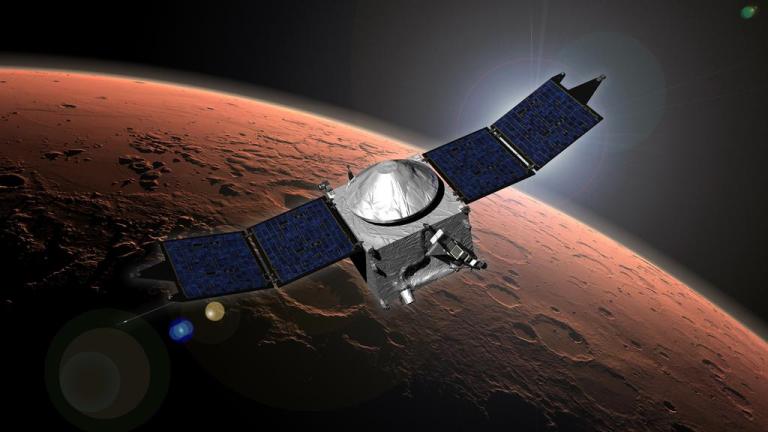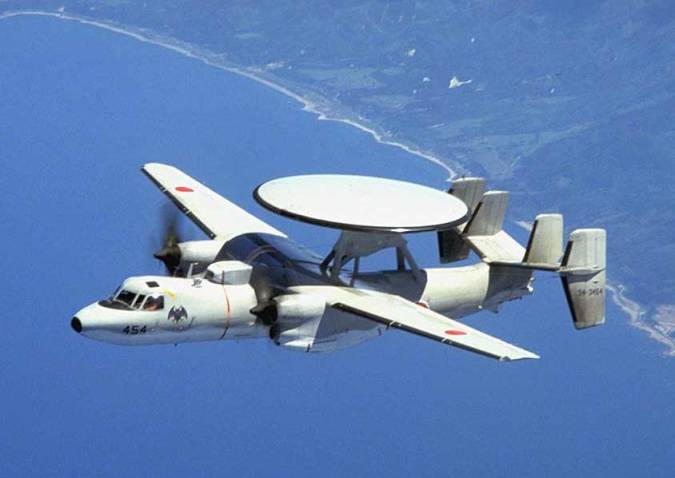
An artist's illustration of the MAVEN at Martian orbit. A NASA image
WASHINGTON (AFP): NASA's MAVEN spacecraft began orbiting Mars on Monday on a mission to study how the Red Planet's climate changed over time from warm and wet to cold and dry.
"Based on observed navigation data, congratulations. MAVEN is now in orbit," said Dave Folta of NASA's Goddard Space Flight Center.
The unmanned orbiter has travelled more than 10 months and 711 million kilometers to reach Mars Sunday for a first-of-its kind study of the planet's upper atmosphere.
The data from the Mars Atmosphere and Volatile Evolution (MAVEN) spacecraft aims to help scientists understand what happened to the water on Mars and the carbon dioxide in its atmosphere several billion years ago.
How Mars lost its atmosphere is one of science's biggest mysteries. The answers could shed light on the planet's potential to support life -- even if that was just microbial life -- long ago.
MAVEN's findings are also expected to help add to knowledge of how humans could survive on a future visit to the Red Planet, perhaps as early as 2030.
"Mars is a cool place, but there is not much atmosphere," said John Clarke, of the MAVEN science team.
"It is very cold, it is well below zero. The atmosphere is about half a percent of what we are breathing," he added.
"But we know that Mars could change and it was probably different in the past. There is a lot of evidence of flowing water on the surface from Mars's ancient history."
Next, MAVEN will enter a six-week phase for tests.
Then, it begins a one-year mission of studying the gases in Mars's upper atmosphere and how it interacts with the Sun and solar wind.
Much of MAVEN's year-long mission will be spent circling the planet 3,730 miles above the surface.
However, it will execute five deep dips to a distance of just 78 miles above the Martian landscape to get readings of the atmosphere at various levels.
NASA has sent several rovers and probes to Mars in recent years.
The US space agency's latest robotic vehicle, Curiosity, is exploring Gale Crater and Mount Sharp, looking for interesting rocks and returning data on whether the Martian environment shows evidence of a past ability to support life.
Later this week, India's Mars Orbiter Mission (MOM) will also be on course to reach Mars.
The unmanned MOM probe is set to enter Mars's orbit in the next few years after 10 months in space, marking India's first mission to the planet to search for evidence of life.
 Previous Article
Previous Article Next Article
Next Article












The Indian Air Force, in its flight trials evaluation report submitted before the Defence Ministry l..
view articleAn insight into the Medium Multi-Role Combat Aircraft competition...
view articleSky enthusiasts can now spot the International Space Station (ISS) commanded by Indian-American astr..
view article